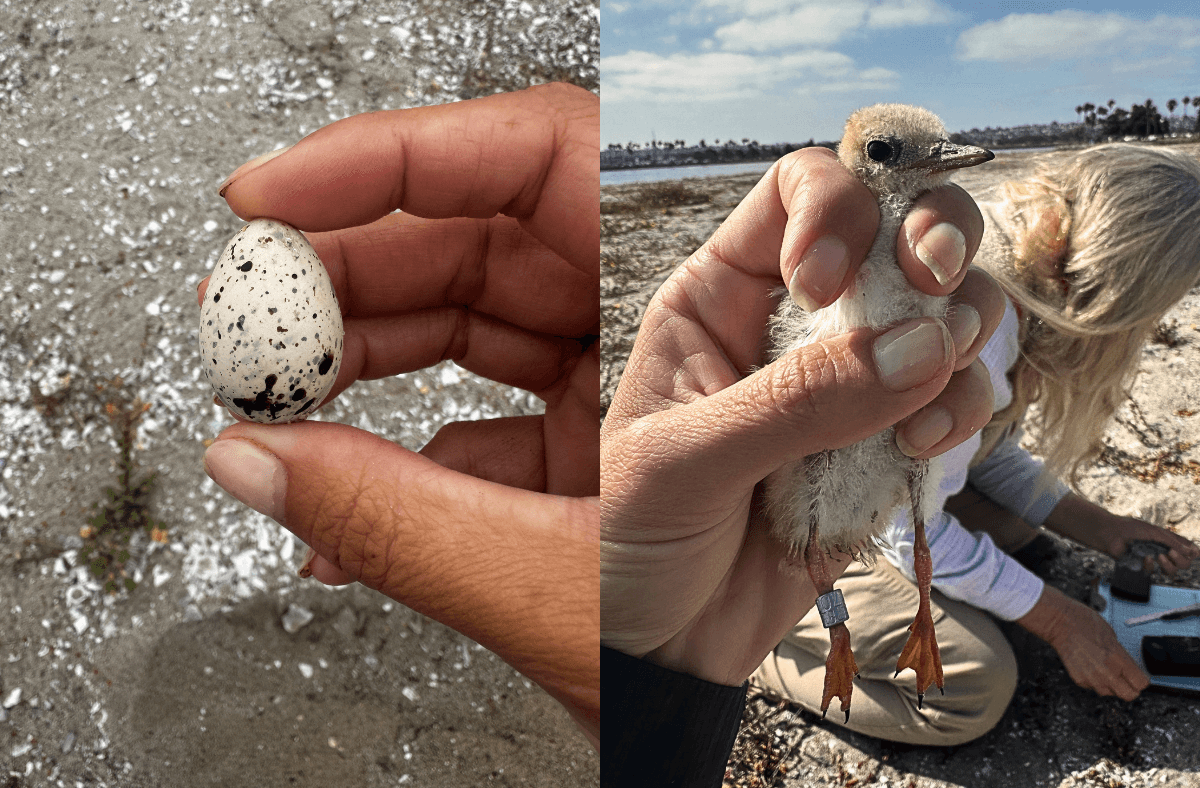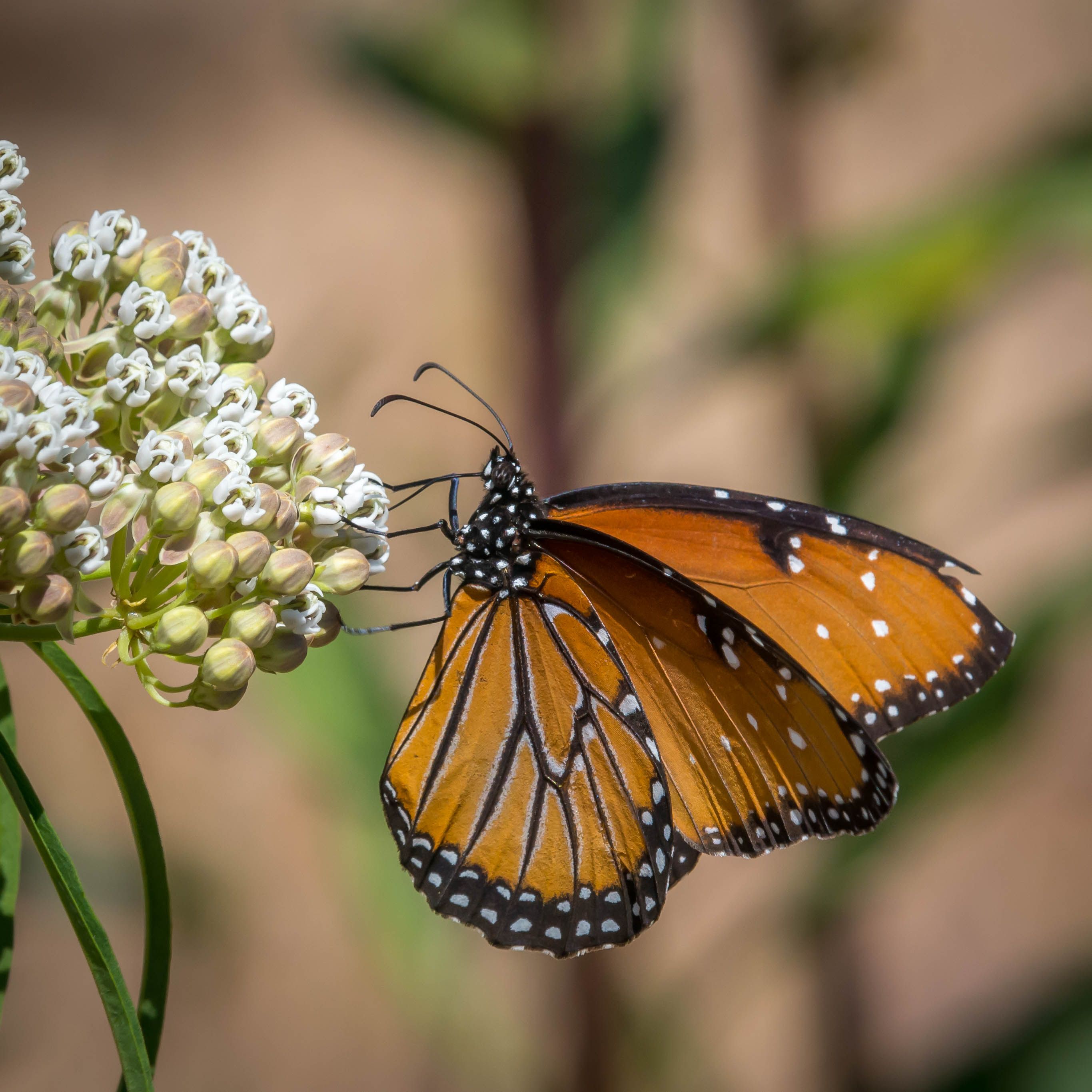
Mariner's Point is a well-known location for San Diego birders, but its inconspicuous appearance may be keeping tourists and even locals out of the loop about this precious habitat. Like much of Mission Bay, Mariner's Point was created by the City in the 1950s and 60s, but it is also a scenic peninsula known for its sandy beach, walking paths, and picnic areas. It's a popular spot for outdoor activities and offers beautiful views of the bay. Hidden at the southern tip of the point is a nesting ground for the endangered California Least Tern (Sterna antillarum browni).
Since 1993, the San Diego Bird Alliance (SDBA) has dedicated itself to maintaining and monitoring this critical habitat after volunteering to take over and greatly improve these efforts on the City park property. Since then, we have been organizing volunteer-powered nesting preserve restoration and maintenance for the terns, and over the last 40 years, our partnership with the City has grown into a well-oiled habitat restoration machine. The SDBA runs Ternwatchers, a volunteer program during nesting season from April through August, when dedicated volunteers keep watch over the vulnerable birds. During the off-season, SDBA conducts site maintenance, including keeping vegetation low and sparse. Open, sandy nesting sites are crucial for effective mobbing – open site lines to the horizon are needed for this defensive behavior terns enact to scare off predators.
The site's most significant test came in 1995 when the X Games chose Mariner's Point as one of their venues. Initially, organizers planned to place their ski jump directly adjacent to the tern sanctuary, creating lots of noise and visual disturbance and what would have been a perfect predator perch overlooking the nesting area. The proposal sparked immediate concern from the SDBA Conservation Committee and Jim Peugh, the committee chair.
It became a very high-stakes effort. SDBA joined with Audubon California to get the City to revise the plans considerably. We were greatly assisted, pro-bono, by a local lawyer, Craig Sherman, and a San Francisco firm, Landels, Ripply, and Diamond. The team worked to get the X Games to revise the site plan and add protections for the nesting area, as their only alternative was to shut the project down completely. At the time, the City and their lawyers did not intend to take this issue seriously, failing to acknowledge that the project they approved was a clear violation of the California Environmental Quality Act (CEQA). However, after some difficult discussions, rather than fighting a battle they couldn't win, they chose cooperation over conflict.
Initially, X Games officials prohibited the SDBA Conservation Committee from accessing the site. However, when they escorted committee members onto the grounds, an unexpected reaction triggered a shift. San Diegans and conservation supporters were asking Peugh about the terns' welfare and expressing concern for their status amidst the new chaos. This public display of support became a turning point – X Games organizers quickly realized they were facing unified community opposition to any plan that would threaten the terns.
The resulting collaborative solution was comprehensive and effective. The X Games agreed to move the highest and noisiest activities north to limit water activities near the nesting area, to establish a monitored, 400-foot buffer zone around the nesting area, to hire an ornithologist to watch out for and prevent impacts to the terns, to station a guard to keep people out of the protected zone, and to grant committee members full access to the site. The Federal Aviation Administration (FAA) even got involved, successfully redirecting a blimp that flew over the site and reporting a police helicopter for flying overhead without proper authorization. Both events caused the adult terns to leave the site, so the FAA closed the airspace over the site for the duration of the Games. The on-site ornithologist called Animal Damage Control whenever there was an inappropriate predator, who responded quickly and effectively. As a result of these additional protections, the terns were very productive.
The X Games' approach the following year demonstrated how conservation victories can create lasting change. Instead of attempting to roll back the previous year's protective measures, organizers returned with a simple question: "What more do you need?" They maintained all the established protections and showed they preferred being part of a conservation success story rather than fighting against it. And that was another record year for tern productivity at that site.
The X Games weren’t the only time the San Diego Bird Alliance had to get creative to protect Mariner’s Point. Around 2002, when the Midway aircraft carrier museum was being planned for San Diego Bay, Jim Peugh raised concerns that Least Terns foraged in the waters the carrier would cover. Instead of dismissing those concerns, Midway volunteers reached out about how they might offset the impact. At the time, many chicks at Mariner’s Cove were being lost after falling into the Bay from the rock revetment. What the site desperately needed was a protective chick fence, and the Midway team stepped up. They purchased the fencing, provided materials and guidance, and helped SDBA volunteers install it correctly. That partnership became another milestone in the ongoing stewardship of Mariner’s Point, alongside gaining City access for maintenance, battling invasive Devil’s Thorn, protecting the site during the X Games, and sustaining two decades of high-quality habitat care.
Jim and our Conservation Committee, our amazing volunteers and our dedicated staff keep doing all that we can for the terns. In the summer of 2024, people scaled the fence and vandalized the Mariner's Point nesting site. They broke the sign, smashed nesting tiles, ripped out chick fencing and scared off the remaining terns. That happened right after we raised the alarm about the unacceptable impacts from Mission Bay fireworks on nesting terns. With some quick advocacy and lots of support, news coverage and presentations to the community lead to heartfelt local support, lots of TernWatchers volunteers, a new sign in cooperation with the City and SDGE, and the Council President leading the charge for no more fireworks in Mission Bay during the nesting season.
- - - - - -
Today, more than three decades after the San Diego Bird Alliance became stewards of Mariner's Point, our work continues. The site stands as a testament to what dedicated community conservation efforts can achieve – transforming a neglected habitat into a thriving sanctuary where endangered California Least Terns can safely raise their young, while the public can still enjoy this beautiful corner of Mission Bay.
This ‘X Games against Mariner’s Point’ success story is one example of the many wildlife-focused advocacy projects that Peugh and other volunteers have worked on for SDBA. They’ve also led wins including preventing construction at the Chula Vista Bayfront from degrading the neighboring wildlife refuge, getting the South Bay Saltworks acquired as a part of the San Diego National Wildlife Refuge, and establishing protected tidelands in Famosa Slough.
The story of Mariner's Point shows that with persistence, community support, and collaborative problem-solving, it's possible to balance conservation needs with development and major events. Thanks to Jim Peugh and the SDBA Conservation Committee’s dedication, many of our native birds can continue nesting at their favorite sites, and we all can enjoy seeing, hearing, and learning from them.

